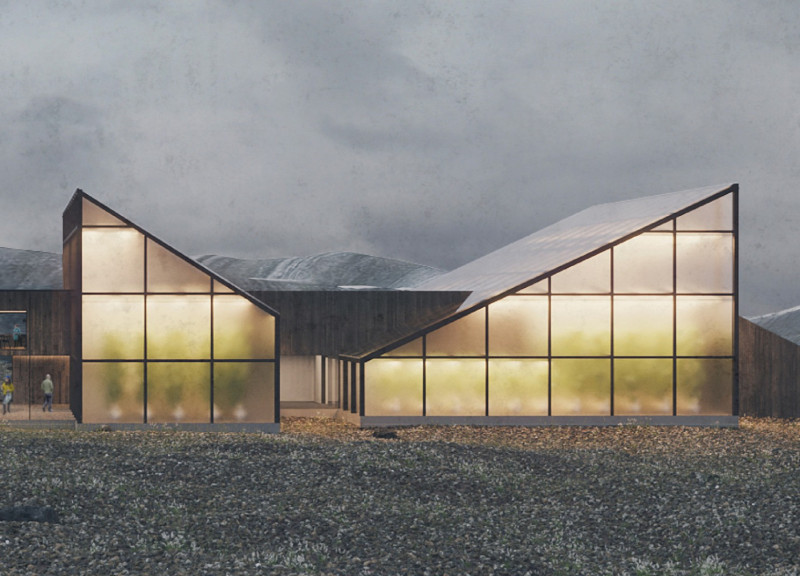5 key facts about this project
The Mývatn Greenhouse is located in a striking landscape characterized by the Hverfjall volcano and the nearby Mývatn Nature Baths. It serves both as a greenhouse and a dining area, fostering a relationship between food production and visitor experiences. The design concept is based on a careful analysis of traditional greenhouse forms, reimagined to fit within the unique ecological context of the site.
Design Concept
The design focuses on essential features of conventional greenhouses, including the ability of materials to allow light in, appropriate height for ventilation, and modularity to accommodate future growth. This departure from standard greenhouse designs results in a modern form that respects the surrounding environment. Views of the volcano are incorporated intentionally, creating a connection between the building and its natural setting.
Spatial Organization
The layout of the greenhouse is organized to encourage smooth movement between different areas. A linear flow allows visitors to navigate easily from the dining area to the greenhouse. This setup highlights the farm-to-table philosophy, where diners can see and understand the processes behind their meals. The careful placement of spaces fosters interaction, making it easy for guests to engage with both the food and the landscape.
Material Selection
Material choices are significant in shaping the greenhouse’s character. Timber is the primary choice for structural components and interior finishes, promoting a warm and inviting atmosphere. Charred timber cladding not only enhances durability but also provides an appealing visual aspect to the exterior. Additionally, rock wool or similar insulation supports energy efficiency, contributing to a practical and sustainable design.
Sustainability Strategies
Sustainability is a critical consideration, with the greenhouse relying on geothermal energy from a nearby source for its operations. The design includes mechanisms for capturing rainwater, which can be used for irrigation within the greenhouse. These strategies support a commitment to environmental responsibility and ensure the structure operates effectively within its natural surroundings.
The angled roof of the greenhouse frames the landscape while allowing natural light to flood the interior spaces. This design feature creates a shifting dance of light and shadow throughout the day, inviting visitors to enjoy an experience that connects them to both the building and the landscape around it.






















































